The water of the ocean surface moves in a regular pattern called surface ocean currents. the currents are named. In this map, warm currents are shown in red and cold currents are shown in blue.
Click on image for full size
Windows to the Universe
Surface Ocean Currents
The water at the ocean surface is moved by powerful wind. The wind is able to move the top 400 meters of the ocean. This moving water is called surface ocean currents.
Surface ocean currents form large circular patterns called gyres. Gyres flow clockwise in Northern Hemisphere oceans and counterclockwise in Southern Hemisphere oceans.
These currents are not all the same. Some currents are deep and narrow. Other currents are shallow and wide. Some move quickly while others move more slowly. Some currents are very large. The Gulf Stream, a surface current in the North Atlantic, carries 4500 times more water than the Mississippi River.
The currents carry heat from place to place. The Sun warms water at the equator more than it does at the high latitude polar regions. The heat travels in surface currents to higher latitudes. A current that brings warmth into a high latitude region will make that region’s climate less chilly.
Surface ocean currents can create eddies, swirling loops of water, as they flow. Surface ocean currents can also affect upwelling in many places.
You might also be interested in:

Wind is moving air. Warm air rises, and cool air comes in to take its place. This movement creates the winds around the globe. Winds move at different speeds and have different names based on their speed.
...more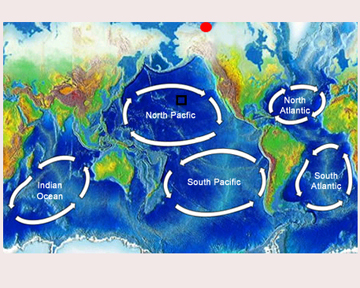
Have you ever played with a toy called a gyroscope? It spins around and around. Scientists use the similar word gyre to explain something that moves in a circle. There are gyres in the ocean that are huge
...more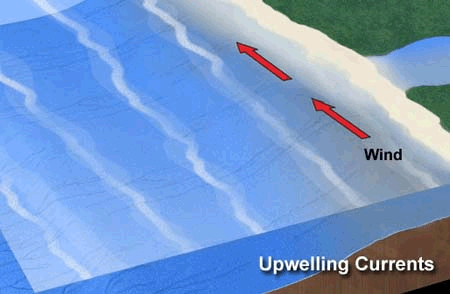
There are places in the ocean where water from the deep sea travels up to the surface. These are called areas of upwelling. The deep waters can have a large influence on marine life and the climate too.
...more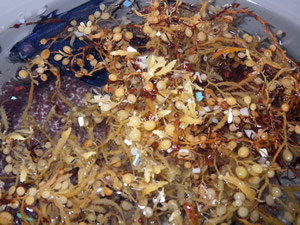
A team of researchers from the Sea Education Association (SEA), Woods Hole Oceanographic Institution (WHOI), and the University of Hawaii (UH) has conducted a study of plastic debris in the ocean. Certain
...more
Do you want to learn about how water moves through the Arctic Ocean? Then put your finger on the map on this page. Start on the blue line to the far left of the map. This is where water enters the Arctic
...more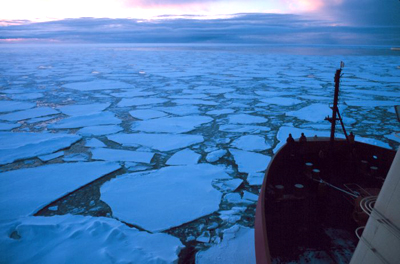
The Southern Ocean is sometimes known as the Antarctic Ocean or South Polar Ocean. It surrounds Antarctica in the South Polar Region. The Southern Ocean is a bit different from other oceans. Other oceans
...more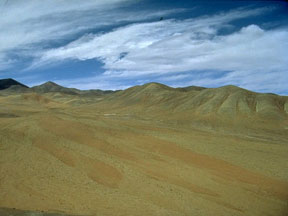
The Atacama Desert is one of the driest places on Earth. The Atacama is in the country of Chile in South America. In an average year, this desert gets less than 1 millimeter (0.04 inch) of rain! It is
...more















